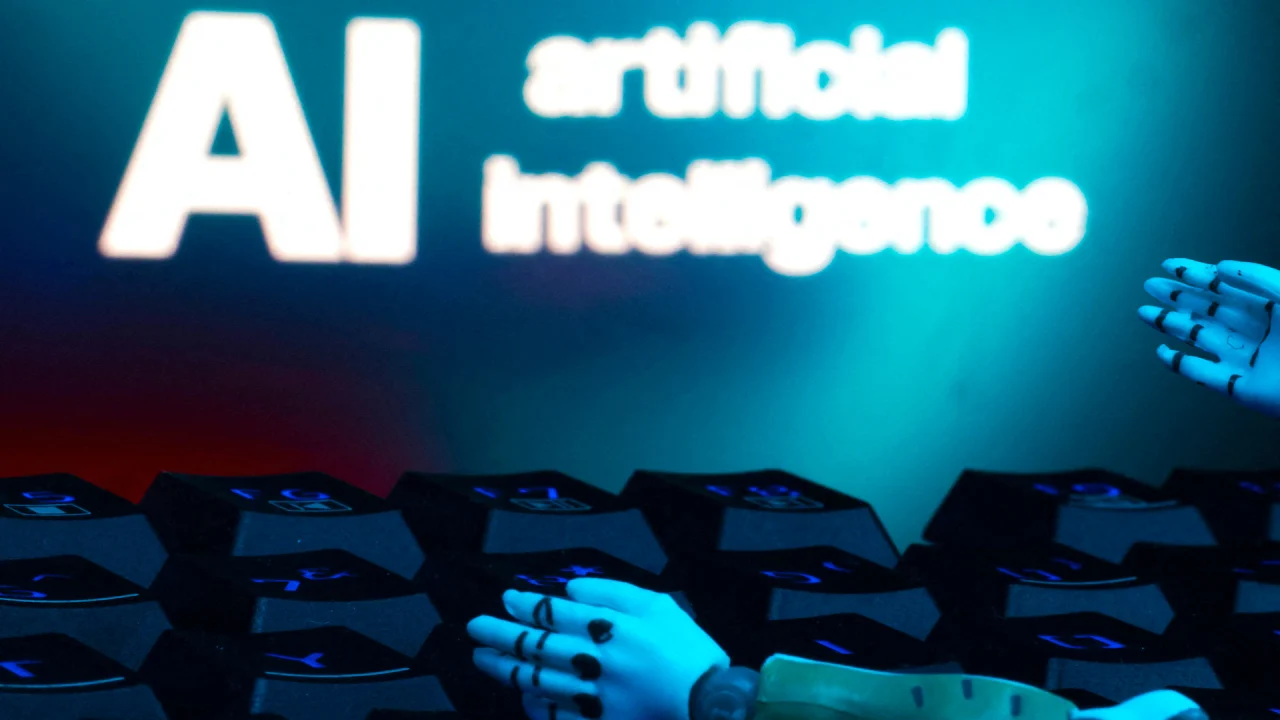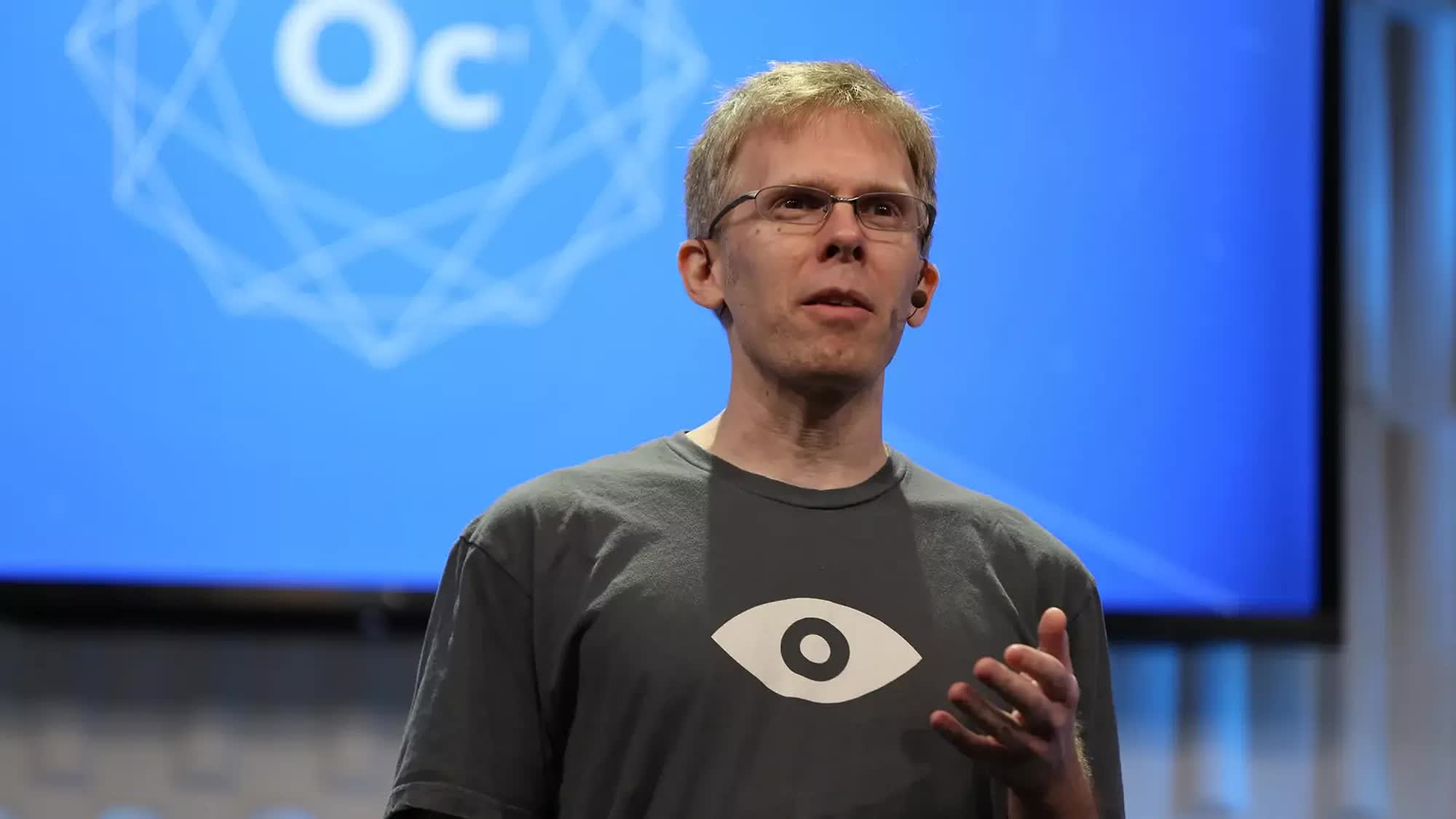New 'Doom: The Dark Ages' Already Adjusted to Add Even More Dangerous Demons
Doom: The Dark Ages just launched on May 15. But it's already received "difficulty" balance changes "that have made the demons of Hell even more dangerous than ever," writes Windows Central:
According to DOOM's official website Slayer's Club, these balance adjustments are focused on making the game harder, as players have been leaving feedback saying it felt too easy even on Nightmare Mode. As a result, enemies now hit harder, health and armor item pick-ups drop less often, and certain enemies punish you more severely for mistiming the parry mechanic.
It reached three million players in just five days, which was seven times faster than 2020's Doom: Eternal," reports Wccftech, more than two million of those three million launch players were playing on Xbox, while only 500K were playing on PS5.") "id Software proves it can still reinvent the wheel," according to one reviewer, "shaking up numerous aspects of gameplay, exchanging elaborate platforming for brutal on-the-ground action, as well as the ability to soar on a dragon's back or stomp around in a giant mech."
And the New York Times says the game "effectively reinvents the hellish shooter with a revamped movement system and deepened lore" in the medieval goth-themed game...
Double jumping and dashing are ditched and replaced with an emphasis on raw power and slow, strategic melee combat. Doom Slayer's arsenal features a brand-new tool, the powerful Shield Saw, which Id Software made a point to showcase across its "Stand and Fight" trailers and advertisements. Used for absorbing damage at the expense of speed, the saw also allows players to bash enemies from afar and close the gap on chasms too wide to jump across. While previous titles allowed players to quickly worm their way through bullet hell, The Dark Ages expects you to meet foes head on. "If you were an F-22 fighter jet in Doom Eternal, this time around we wanted you to feel like an Abrams tank," Hugo Martin, the game's creative director, has told journalists.
And Doom Slayer's beefy durability and unstoppable nature does make the gameplay a refreshing experience. The badassery is somehow ratcheted to new heights with the inclusion of a fully controllable mech, which has only a handful of attacks at its disposal, and actual dragons. Flight in a Doom game is entirely surprising and fluid, and the dragons feel relatively easy to maneuver through tight spots. They can also engage in combat more deliberately with the use of dodges and mounted cannons...
One of my favorite additions is the skullcrusher pulverizer. Equal parts heinous nutcracker and demonic woodchipper, the gun lodges skulls into a grinder and sends shards of bones flying at enemies. The animation is both goofy and satisfying.
Another special Times article notes that Doom's fans "resurrect the original game over and over again on progressively stranger pieces of hardware: a Mazda Miata, a NordicTrack treadmill, a French pharmacy sign."
But what many hard-core tech hobbyists want to know is whether you can play it on a pregnancy test. The answer: positively yes. And for the first time, even New York Times readers can play Doom within The Times's site...
None of this happened by accident, of course. Ports were not incidental to Doom's development. They were a core consideration. "Doom was developed in a really unique way that lent a high degree of portability to its code base," said John Romero, who programmed the game with John Carmack.Id had developed Wolfenstein 3D, the Nazi-killing predecessor to Doom, on PCs. To build Doom, Carmack and Romero used NeXT, the hardware and software company founded by Steve Jobs after his ouster from Apple in 1985. NeXT computers were powerful, selling for about apiece in today's dollars. And any game designed on that system would require porting to the more humdrum PCs encountered by consumers at computer labs or office jobs.
This turned out to be advantageous because Carmack had a special aptitude for ports. All of Id's founders met as colleagues at Softdisk, which had hired Carmack because of his ability to spin off multiple versions of a single game. The group decided to strike out on its own after Carmack created a near-perfect replica of the first level of Super Mario Bros. 3 — Nintendo's best-selling platformer — on a PC. It was a wonder of software engineering that compensated for limited processing power with clever workarounds. "This is the thing that everyone has," Romero said of PCs. "The fact that we could figure out how to make it become a game console was world changing...."
Romero founded a series of game studios after leaving Id in 1996 and is working on a new first-person shooter, the genre he and Carmack practically invented. He has no illusions about how it may stack up. "I absolutely accept that Doom is the best game I'll ever make that has that kind of a reach," he said. "At some point you make the best thing." Thirty years on, people are still making it.
And in related news, PC Gamer reports...
As part of a new "FPS Fridays" series on Twitch, legendary shooter designer John Romero streamed New Blood's 2018 hit, Dusk, one of the first and most influential indie "boomer shooters" in the genre's recent revitalization. The short of it? Romero seems to have had a blast.
of this story at Slashdot.
#new #039doom #dark #ages039 #already
New 'Doom: The Dark Ages' Already Adjusted to Add Even More Dangerous Demons
Doom: The Dark Ages just launched on May 15. But it's already received "difficulty" balance changes "that have made the demons of Hell even more dangerous than ever," writes Windows Central:
According to DOOM's official website Slayer's Club, these balance adjustments are focused on making the game harder, as players have been leaving feedback saying it felt too easy even on Nightmare Mode. As a result, enemies now hit harder, health and armor item pick-ups drop less often, and certain enemies punish you more severely for mistiming the parry mechanic.
It reached three million players in just five days, which was seven times faster than 2020's Doom: Eternal," reports Wccftech, more than two million of those three million launch players were playing on Xbox, while only 500K were playing on PS5.") "id Software proves it can still reinvent the wheel," according to one reviewer, "shaking up numerous aspects of gameplay, exchanging elaborate platforming for brutal on-the-ground action, as well as the ability to soar on a dragon's back or stomp around in a giant mech."
And the New York Times says the game "effectively reinvents the hellish shooter with a revamped movement system and deepened lore" in the medieval goth-themed game...
Double jumping and dashing are ditched and replaced with an emphasis on raw power and slow, strategic melee combat. Doom Slayer's arsenal features a brand-new tool, the powerful Shield Saw, which Id Software made a point to showcase across its "Stand and Fight" trailers and advertisements. Used for absorbing damage at the expense of speed, the saw also allows players to bash enemies from afar and close the gap on chasms too wide to jump across. While previous titles allowed players to quickly worm their way through bullet hell, The Dark Ages expects you to meet foes head on. "If you were an F-22 fighter jet in Doom Eternal, this time around we wanted you to feel like an Abrams tank," Hugo Martin, the game's creative director, has told journalists.
And Doom Slayer's beefy durability and unstoppable nature does make the gameplay a refreshing experience. The badassery is somehow ratcheted to new heights with the inclusion of a fully controllable mech, which has only a handful of attacks at its disposal, and actual dragons. Flight in a Doom game is entirely surprising and fluid, and the dragons feel relatively easy to maneuver through tight spots. They can also engage in combat more deliberately with the use of dodges and mounted cannons...
One of my favorite additions is the skullcrusher pulverizer. Equal parts heinous nutcracker and demonic woodchipper, the gun lodges skulls into a grinder and sends shards of bones flying at enemies. The animation is both goofy and satisfying.
Another special Times article notes that Doom's fans "resurrect the original game over and over again on progressively stranger pieces of hardware: a Mazda Miata, a NordicTrack treadmill, a French pharmacy sign."
But what many hard-core tech hobbyists want to know is whether you can play it on a pregnancy test. The answer: positively yes. And for the first time, even New York Times readers can play Doom within The Times's site...
None of this happened by accident, of course. Ports were not incidental to Doom's development. They were a core consideration. "Doom was developed in a really unique way that lent a high degree of portability to its code base," said John Romero, who programmed the game with John Carmack.Id had developed Wolfenstein 3D, the Nazi-killing predecessor to Doom, on PCs. To build Doom, Carmack and Romero used NeXT, the hardware and software company founded by Steve Jobs after his ouster from Apple in 1985. NeXT computers were powerful, selling for about apiece in today's dollars. And any game designed on that system would require porting to the more humdrum PCs encountered by consumers at computer labs or office jobs.
This turned out to be advantageous because Carmack had a special aptitude for ports. All of Id's founders met as colleagues at Softdisk, which had hired Carmack because of his ability to spin off multiple versions of a single game. The group decided to strike out on its own after Carmack created a near-perfect replica of the first level of Super Mario Bros. 3 — Nintendo's best-selling platformer — on a PC. It was a wonder of software engineering that compensated for limited processing power with clever workarounds. "This is the thing that everyone has," Romero said of PCs. "The fact that we could figure out how to make it become a game console was world changing...."
Romero founded a series of game studios after leaving Id in 1996 and is working on a new first-person shooter, the genre he and Carmack practically invented. He has no illusions about how it may stack up. "I absolutely accept that Doom is the best game I'll ever make that has that kind of a reach," he said. "At some point you make the best thing." Thirty years on, people are still making it.
And in related news, PC Gamer reports...
As part of a new "FPS Fridays" series on Twitch, legendary shooter designer John Romero streamed New Blood's 2018 hit, Dusk, one of the first and most influential indie "boomer shooters" in the genre's recent revitalization. The short of it? Romero seems to have had a blast.
of this story at Slashdot.
#new #039doom #dark #ages039 #already
0 Комментарии
·0 Поделились
·0 предпросмотр





